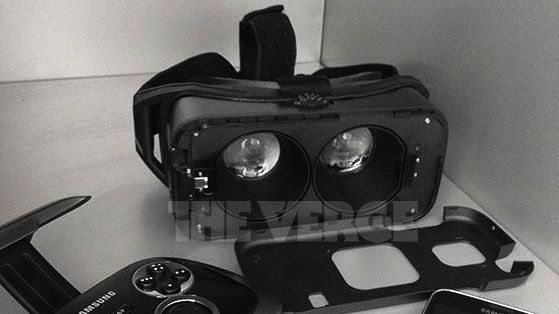Samsung's VR headset appears in the flesh, look for it next to the Note 4

We've seen it leak countless times, but we've never actually seen what Samsung's VR headset looks like in the flesh.
That seemingly changes today as an image of the set-up was acquired by The Verge.
The site reported Samsung plans to unveil the headset codenamed "Project Moonlight" during its September 3 pre-IFA event. It's there Samsung is also expected to announce the Galaxy Note 4.
The headset, which may be dubbed Gear VR at the time of release, looks to employ a smartphone as its display, much like Google's Cardboard. Its lenses are capable of turning the flat on-screen imagery into a 3D wonderland, or so it would seem.
Calling Oculus
Oculus had been reported as involved in Samsung's VR project, but how much the Rift-maker partook in developing the headset shown here or what its involvement in the final product is like isn't known.
The phone shown alongside the goggles here looks to be a Galaxy S5, however if Samsung announces Project Moonlight and the Note 4 at the same event, you can bet there will be some synergy between the two.
Besides a panel that presumably holds the phone onto the headset, Samsung's VR gear looks to have a focus dial and possibly a micro USB connection to tether to the handset. There's also a gamepad in the leak, one we assume controls the action happening in front of a user's face.
Sign up for breaking news, reviews, opinion, top tech deals, and more.
TechRadar will be on hand at Samsung's events September 3 in New York and Berlin, so stay tuned for what Sammy reveals.
- There's plenty to look forward to at IFA 2014!

Michelle was previously a news editor at TechRadar, leading consumer tech news and reviews. Michelle is now a Content Strategist at Facebook. A versatile, highly effective content writer and skilled editor with a keen eye for detail, Michelle is a collaborative problem solver and covered everything from smartwatches and microprocessors to VR and self-driving cars.